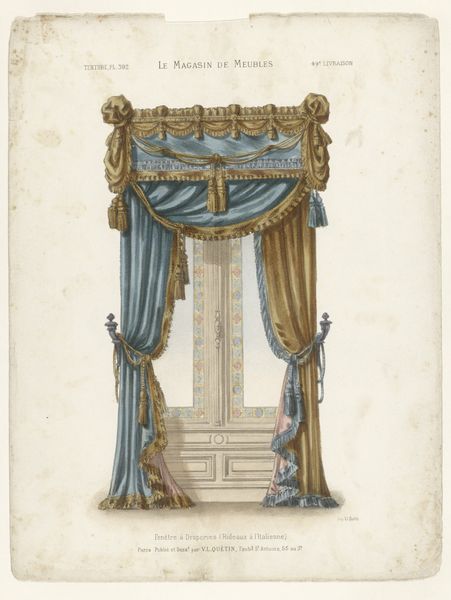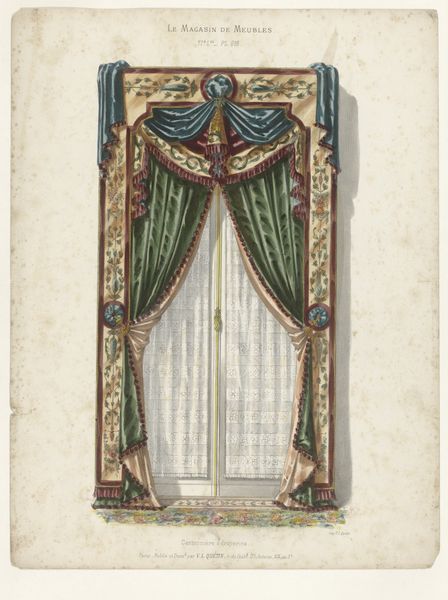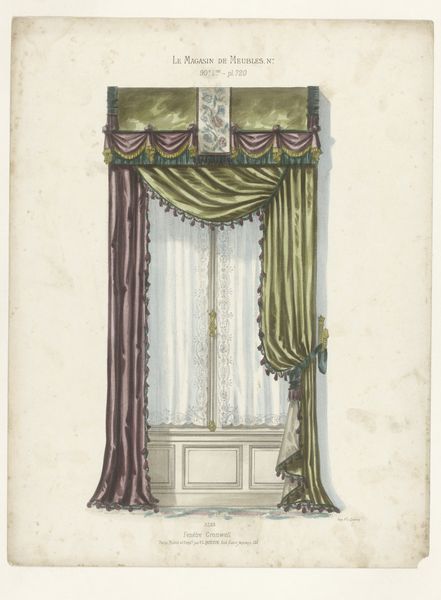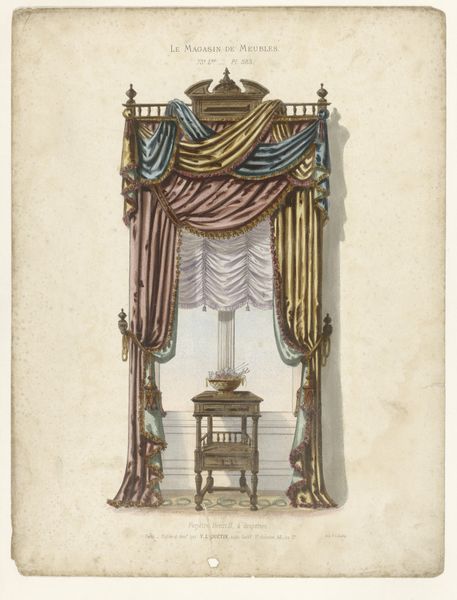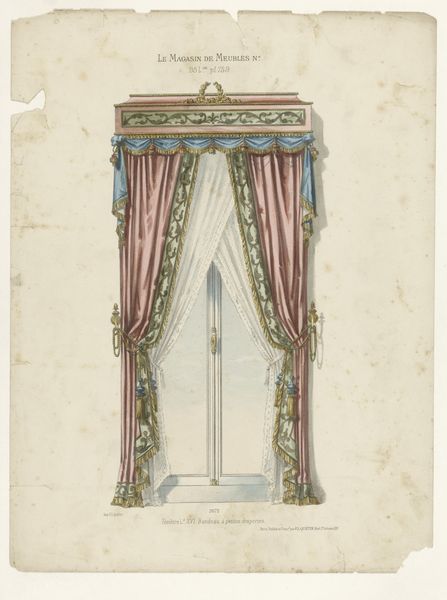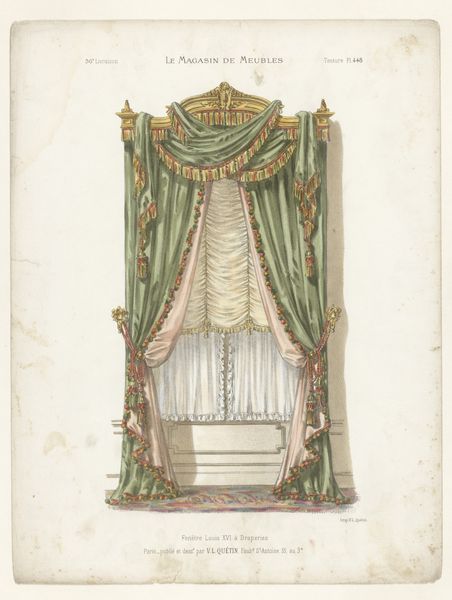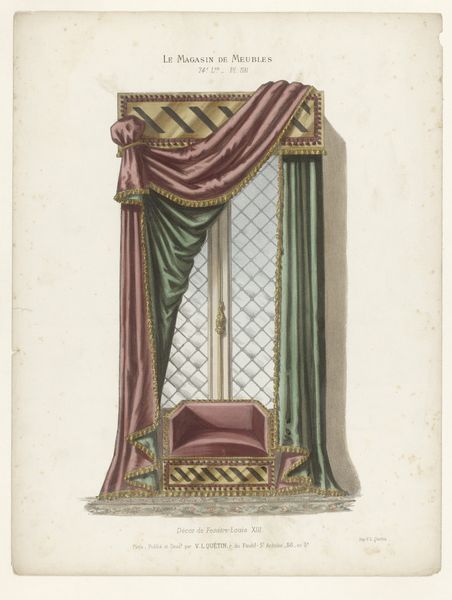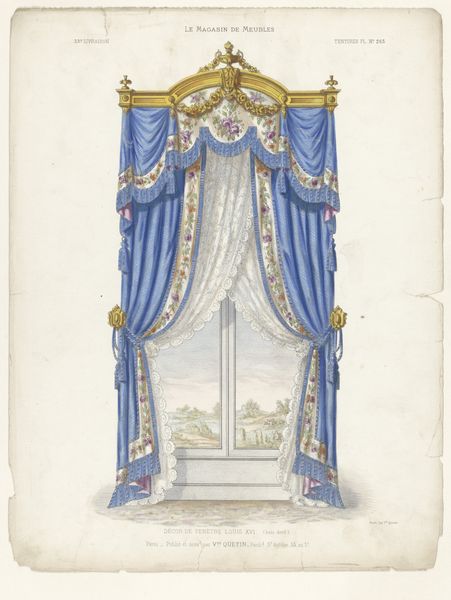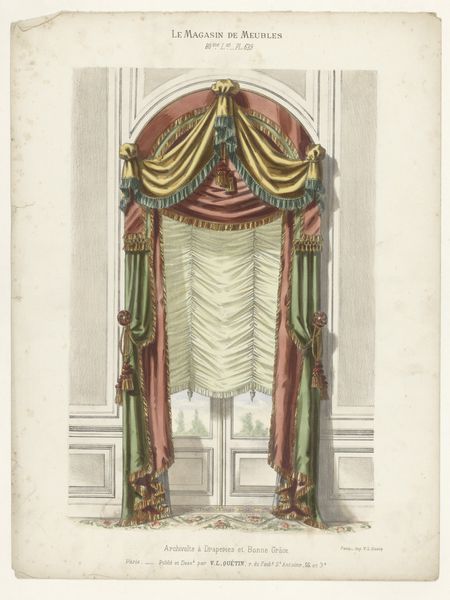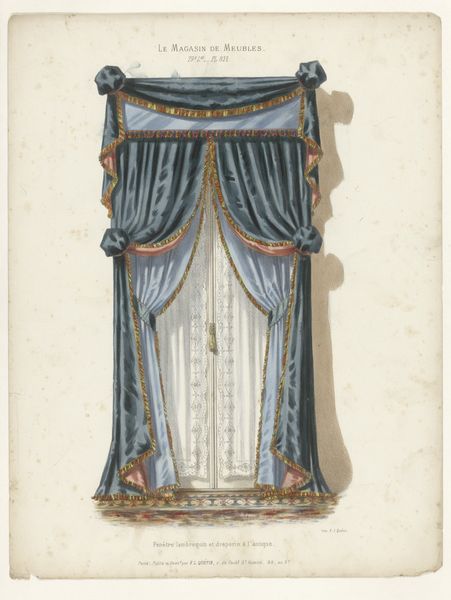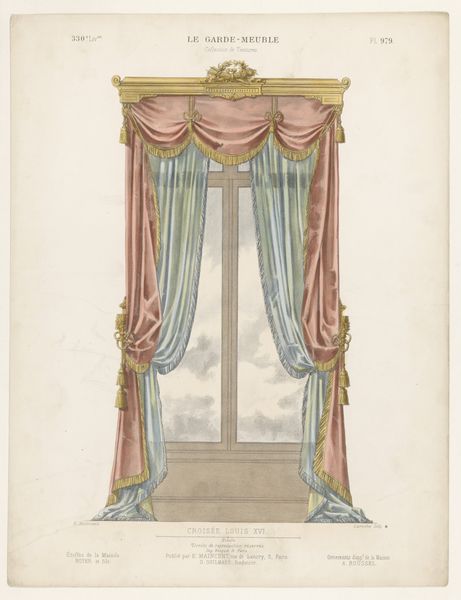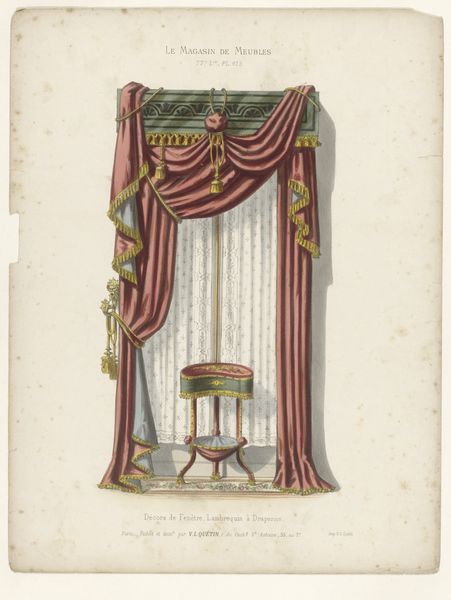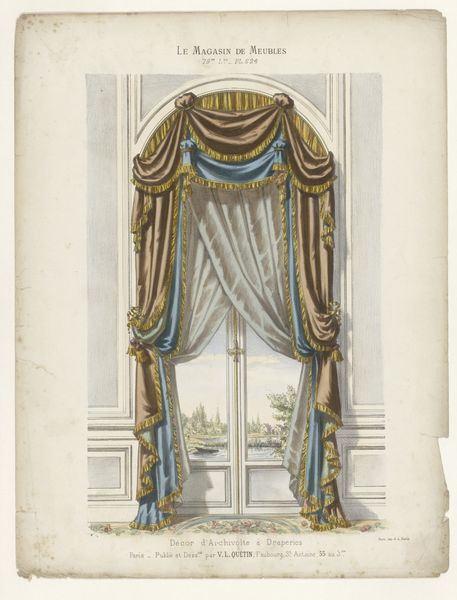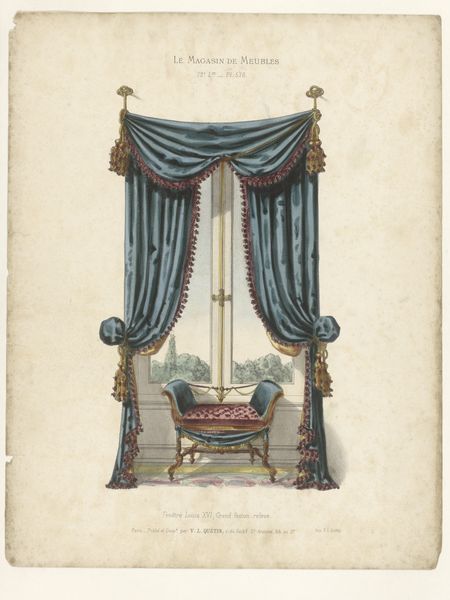
drawing, print, watercolor
#
drawing
#
water colours
# print
#
watercolor
#
coloured pencil
#
19th century
#
decorative-art
Dimensions: height 363 mm, width 275 mm
Copyright: Rijks Museum: Open Domain
Editor: So, here we have "Venster met gordijnen," a drawing made after 1878, employing watercolor and print techniques, probably meant as decorative art. The curtains just drip with this heavy opulence – it almost feels like I can feel the weight of the fabric. What catches your eye about it? Curator: I see an artifact ripe for a materialist reading. Note the meticulous rendering of textiles – velvet, lace, trim. It highlights the immense labor invested in producing such luxury. This isn't just about aesthetic pleasure; it's a document of class and consumption. What social strata do you imagine these curtains were created for and, equally importantly, by? Editor: Well, judging from the… everything… probably the upper classes. I'd imagine specialized artisans were commissioned to create them? The sheer detail looks painstaking! Curator: Precisely. Now, think about the process – the sourcing of materials, the weaving, the dyeing, the embellishments. Each step involved skilled labor, a vast network of production fueled by specific economic conditions. How does acknowledging the work behind these objects change your perception of them? Editor: It makes me think about the exploitation inherent in luxury. The beautiful surface distracts from the, perhaps, less beautiful realities of its creation. It feels less like just a pretty picture and more like an artifact of social history. Curator: Exactly. This rendering transforms curtains into a mirror reflecting not just light but the complex machinery of its creation, and, importantly, the social imbalances of the time. Considering materiality challenges traditional art boundaries, making us reconsider high art in terms of craft. What have we uncovered, examining material and labor here? Editor: I learned that art can also function as a form of documentation that exposes the often-invisible aspects of production and labor that underpin even the most outwardly beautiful and luxurious objects. Thanks, that perspective shifted how I will look at art!
Comments
No comments
Be the first to comment and join the conversation on the ultimate creative platform.
